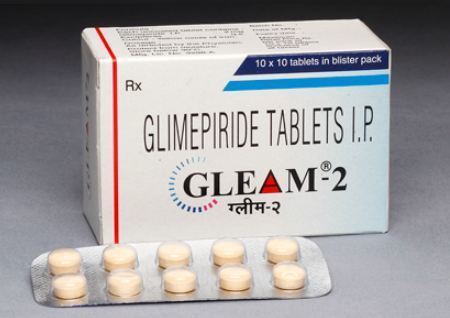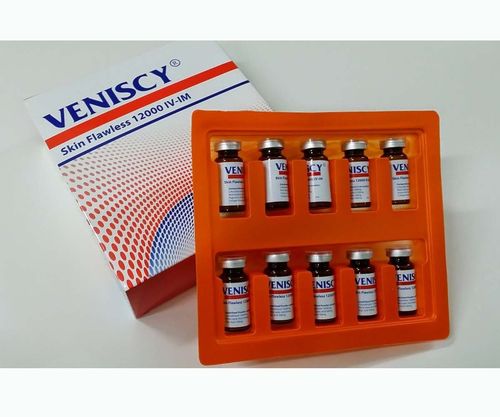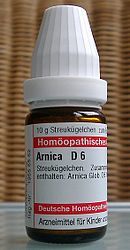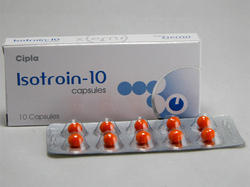Glimepiride Tablets
Product Details:
- Physical Form Tablets
- Click to View more
Glimepiride Tablets Price And Quantity
- 10 Pack
Glimepiride Tablets Product Specifications
- Tablets
Glimepiride Tablets Trade Information
- MUMBAI
- Cash in Advance (CID)
- 10,000 Pack Per Day
- 20 Days
- Yes
- Contact us for information regarding our sample policy
- As per order
- Western Europe Australia North America Eastern Europe Africa Central America Middle East South America Asia
- WHO GMP
Product Description
Highlights for glimepiride
Glimepiride oral tablet is available as a generic drug and as a brand-name drug. Brand name: Amaryl.
Glimepiride comes as a tablet you take by mouth.
Glimepiride is used to treat type 2 diabetes. It helps control blood sugar when used along with a healthy diet and exercise.
What is glimepiride?
Glimepiride is a prescription drug. It comes as an oral tablet.
Glimepiride is available as the brand-name drug Amaryl and as a generic drug. Generic drugs usually cost less. In some cases, they may not be available in every strength or form as the brand-name version.
This drug may be used as part of a combination therapy. That means you need to take it with other drugs.
Why it's used
Glimepiride is used to reduce high blood sugar levels in people with type 2 diabetes. It’s used in combination with a healthy diet and exercise.
This medication may be used with insulin or other types of diabetes drugs to help control your high blood sugar.
How it works
Glimepiride belongs to a class of drugs called sulfonylureas. A class of drugs is a group of medications that work in a similar way. These drugs are often used to treat similar conditions.
Glimepiride helps your pancreas to release insulin. Insulin is a chemical that your body makes to move sugar (glucose) from your bloodstream into your cells. Once the sugar enters your cells, they can use it as fuel for your body.
With type 2 diabetes, your body doesn’t make enough insulin, or it can't properly use the insulin that it makes, so the sugar stays in your bloodstream. This causes high blood sugar levels (hyperglycemia).
Glimepiride side effects
Glimepiride oral tablet doesn’t cause drowsiness, but it can cause other side effects.
More common side effects
The more common side effects that can occur with glimepiride include:
low blood sugar (hypoglycemia). Symptoms may include:
trembling or shaking
nervousness or anxiety
irritability
sweating
lightheadedness or dizziness
headache
fast heart rate or palpitations
intense hunger
fatigue or tiredness
headache
nausea
dizziness
weakness
unexplained weight gain
If these effects are mild, they may go away within a few days or a couple of weeks. If they’re more severe or don’t go away, talk to your doctor or pharmacist.
Serious side effects
Call your doctor right away if you have serious side effects. Call 911 if your symptoms feel life-threatening or if you think you’re having a medical emergency. Serious side effects and their symptoms can include the following:
severe low blood sugar (less than 35 to 40 mg/dL). Symptoms may include:
mood changes, such as irritability, impatience, anger, stubbornness, or sadness
confusion, including delirium
lightheadedness or dizziness
sleepiness
blurred or impaired vision
tingling or numbness in your lips or tongue
headaches
weakness or fatigue
lack of coordination
nightmares or crying out in your sleep
seizures
unconsciousness
hypersensitivity (allergic) reactions. This drug can cause several types of allergic reactions, including:
anaphylaxis. This is a severe and possibly a life-threatening allergic reaction. Symptoms may include trouble breathing, swelling of your throat or tongue, hives, or difficulty swallowing.
angioedema. This involves swelling of your skin, the layers under your skin, and your mucous membranes (inside your mouth).
Stevens-Johnsons syndrome. This is a rare and serious disorder of your skin and mucous membranes (mouth and nose). It starts with flu-like symptoms and is followed by a painful red rash and blisters.
liver damage. Symptoms may include:
yellowing of your skin and the whites of your eyes (jaundice)
stomach pain and swelling
swelling in your legs and ankles (edema)
itchy skin
dark-colored urine
pale stool or tar-colored stool
constant sleepiness
nausea
vomiting
bruising easily
low blood cell or platelet counts. Symptoms may include infections and bruising or bleeding that doesn’t stop as quickly as normal.
low sodium levels (hyponatremia) and syndrome of inappropriate antidiuretic hormone secretion (SIADH). In SIADH, your body is unable to get rid of excess water by urinating. This leads to lower sodium levels in your blood (hyponatremia), which is dangerous. Symptoms may include:
nausea and vomiting
headache
confusion
loss of energy and fatigue
restlessness and irritability
muscle weakness, spasms, or cramps
seizures
coma
Glimepiride may interact with other medications
Glimepiride oral tablet can interact with other medications, vitamins, or herbs you may be taking. An interaction is when a substance changes the way a drug works. This can be harmful or prevent the drug from working well.
To help avoid interactions, your doctor should manage all of your medications carefully. Be sure to tell your doctor about all medications, vitamins, or herbs you’re taking. To find out how this drug might interact with something else you’re taking, talk to your doctor or pharmacist.
Examples of drugs that can cause interactions with glimepiride are listed below.
Quinolone antibiotics
These drugs can increase the effect of glimepiride and cause low blood sugar. Examples of these drugs include:
ciprofloxacin (Cipro)
levofloxacin (Levaquin)
Blood pressure and heart drugs (angiotensin-converting enzyme [ACE] inhibitors)
These drugs can increase the effect of glimepiride and cause low blood sugar. Examples of these drugs include:
benazepril (Lotensin)
captopril (Capoten)
enalapril (Vasotec)
enalaprilat
fosinopril (Monopril)
lisinopril (Prinivil)
moexipril (Univasc)
perindopril (Aceon)
quinapril (Accupril)
ramipril (Altace)
trandolapril (Mavik)
Antifungals
These drugs can increase the effect of glimepiride and cause low blood sugar. Examples of these drugs include:
fluconazole (Diflucan)
ketoconazole (Nizoral)
Drug that treats eye infections
Chloramphenicol can increase the effect of glimepiride and cause low blood sugar.
Drug that treats high cholesterol and triglycerides
Clofibrate can increase the effect of glimepiride and cause low blood sugar.
Drugs that treat depression
These drugs can increase the effect of glimepiride and cause low blood sugar. Examples of these drugs include:
monoamine oxidase inhibitors (MAOIs), such as:
isocarboxazid (Marplan)
phenelzine (Nardil)
tranylcypromine (Parnate)
Drugs that contain salicylate
These drugs can increase the effect of glimepiride and cause low blood sugar. Examples of these drugs include:
aspirin
magnesium salicylate (Doan’s)
salsalate (Disalcid)
Drugs that contain sulfonamides
These drugs can increase the effect of glimepiride and cause low blood sugar. Examples of these drugs include:
sulfacetamide
sulfadiazine
sulfamethoxazole/trimethoprim (Bactrim)
sulfasalazine (Azulfidine)
sulfisoxazole
Drug that treats cholesterol and type 2 diabetes
Colesevelam can decrease the amount of glimepiride that’s absorbed by your body. This means that the drug may not work as well. This interaction may cause high blood sugar.
Drug that treats low blood sugar
Diazoxide can decrease the effect of glimepiride and cause high blood sugar.
Tuberculosis drugs
These drugs can decrease the effect of glimepiride and cause high blood sugar. Examples of these drugs include:
rifabutin (Mycobutin)
rifampin (Rifadin)
rifapentine (Priftin)
Thiazide diuretics
These drugs can decrease the effect of glimepiride and cause high blood sugar. Examples of these drugs include:
chlorothiazide (Diuril)
chlorthalidone
hydrochlorothiazide (Hydrodiuril)
indapamide (Lozol)
metolazone (Zaroxolyn)
How to take glimepiride
All possible dosages and forms may not be included here. Your dose, form, and how often you take it will depend on:
your age
the condition being treated
how severe your condition is
other medical conditions you have
how you react to the first dose
Drug forms and strengths
Generic: Glimepiride
Form: oral tablet
Strengths: 1 mg, 2 mg, 3 mg, 4 mg, 6 mg, and 8 mg
Brand: Amaryl
Form: oral tablet
Strengths: 1 mg, 2 mg, and 4 mg
Dosage for type 2 diabetes
Adult dosage (ages 18 to 64 years)
The recommended starting dose is 1 mg or 2 mg taken once per day with breakfast or the first main meal of the day.
After reaching a dose of 2 mg per day, your doctor may increase your dose by 1 mg or 2 mg based on your blood sugar levels. They may increase your dose every 1 to 2 weeks until your blood sugar levels are controlled.
The maximum recommended dose is 8 mg taken once per day.
Child dosage (ages 0 to 17 years)
Glimepiride isn’t recommended for people under 18 years old because it may affect body weight and cause low blood sugar.
Senior dosage (ages 65 years and older)
The starting dose is 1 mg taken once per day with breakfast or the first main meal of the day.
Your doctor may adjust your dose based on your blood sugar levels. Since seniors may be more sensitive to glimepiride and are more likely to have decreased kidney function, your doctor may increase your dose more slowly.
The maximum recommended dose is 8 mg taken once per day.
Special dosage considerations
For people with kidney disease: Because you’re at risk for low blood sugar, your dose of glimepiride will likely be lower than the typical dose.
The starting dose is 1 mg taken once per day with breakfast or the first main meal of the day.
Your dose of glimepiride may be adjusted based on your blood sugar levels.
The maximum recommended dose is 8 mg taken once per day.
For people with liver disease: If you have liver disease, you may be more sensitive to the effects of glimepiride. Your doctor may start you at a lower dose and slowly increase your dose if needed.

Price:
- 50
- 100
- 200
- 250
- 500
- 1000+
Other Products in 'Pharmaceutical Formulations' category
&
We are accepting bulk order quantity.








